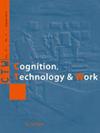运用模糊层次分析法和模糊TOPSIS法对建筑业职业事故原因进行识别、评价和排序。
IF 3.4
3区 工程技术
Q2 ENGINEERING, INDUSTRIAL
引用次数: 2
摘要
就职业事故而言,建筑业是最危险的行业之一。了解影响行业中工伤和死亡的各种因素可以帮助制定预防策略,提高安全绩效并减少事故。目的应用定性研究方法,分几个步骤对建筑行业职业事故的原因进行调查、评价和排序。方法采用安全专家意见和定性德尔菲法,提取建筑事故中最重要的判据。采用模糊层次分析法(FAHP)确定各指标的权重,最后采用模糊TOPSIS法对建筑业职业事故原因进行排序。结果治理因素、职业因素、组织因素、个人因素和环境因素是建筑施工事故发生的决定性因素。运用模糊层次分析法和模糊TOPSIS法对建筑行业职业事故原因进行排序,结果表明治理因素和环境因素分别是建筑行业职业事故最有效和最不有效的影响因素。结论根据评判标准,运用模糊TOPSIS技术,确定建筑行业职业事故治理因素为首选选择。研究结果表明,除了组织因素、个人因素和环境因素外,政府还必须在安全培训计划的立法、执法、实施和组织方面发挥作用。本文章由计算机程序翻译,如有差异,请以英文原文为准。
Identifying, evaluating and prioritizing the causes of occupational accidents in the construction industry using fuzzy AHP and fuzzy TOPSIS.
BACKGROUND
The construction industry is one of the most dangerous industries in terms of occupational accidents. Understanding the various factors that affect work-related injuries and deaths in the industry can help develop prevention strategies, improve safety performance and reduce accidents.
OBJECTIVES
This applied qualitative study was carried out in several steps to investigate, evaluate and prioritize the causes of occupational accidents in the construction industry.
METHODS
In order to extract the most important criteria in construction accidents, the opinions of safety experts and the qualitative Delphi method were used. The Fuzzy Analytic Hierarchy Process (FAHP) was used to determine the weights of selected criteria and finally, the Fuzzy TOPSIS technique was used to rank the causes of occupational accidents in the construction industry.
RESULTS
According to the results, governance, occupational, organizational, individual, and environmental factors were the most determinative options for the cause of construction accidents. Prioritizing the causes of occupational accidents in the construction industry using Fuzzy AHP and Fuzzy TOPSIS showed that governance and environmental factors were the most effective and least effective factors in construction accidents, respectively.
CONCLUSIONS
According to the criteria, and based on fuzzy TOPSIS technique, governance factors were determined to be the primary option for occupational accidents in the construction industry. The results of this study indicate that in addition to organizational factors, individual factors, and environmental factors, the government must also play a role in legislation, law enforcement, implementation, and organization of safety training programs.
求助全文
通过发布文献求助,成功后即可免费获取论文全文。
去求助
来源期刊

Cognition Technology & Work
ENGINEERING, INDUSTRIAL-
CiteScore
6.90
自引率
7.70%
发文量
26
审稿时长
>12 weeks
期刊介绍:
Cognition, Technology & Work focuses on the practical issues of human interaction with technology within the context of work and, in particular, how human cognition affects, and is affected by, work and working conditions.
The aim is to publish research that normally resides on the borderline between people, technology, and organisations. Including how people use information technology, how experience and expertise develop through work, and how incidents and accidents are due to the interaction between individual, technical and organisational factors.
The target is thus the study of people at work from a cognitive systems engineering and socio-technical systems perspective.
The most relevant working contexts of interest to CTW are those where the impact of modern technologies on people at work is particularly important for the users involved as well as for the effects on the environment and plants. Modern society has come to depend on the safe and efficient functioning of a multitude of technological systems as diverse as industrial production, transportation, communication, supply of energy, information and materials, health and finance.
 求助内容:
求助内容: 应助结果提醒方式:
应助结果提醒方式:


